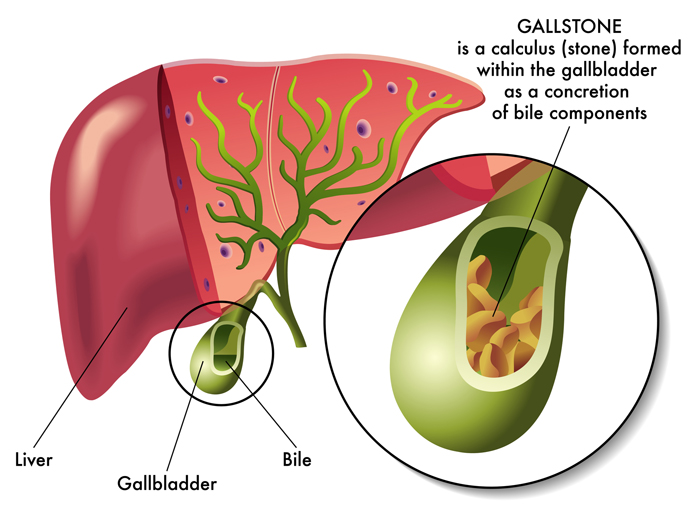The Gallbladder Diet: How Your Food Choice Can Lower the Risk of Gallstones
Gallstones form as a result of your diet, but you can make simple changes in terms of a gallbladder diet to reduce your risk.
Your gallbladder is a small, pear-shaped pouch that sits next to the liver and plays a simple role in digestion. The liver produces a fluid called bile (a combination of water, bile acid, cholesterol, bilirubin, and lecithin) that helps to digest fats in the small intestine. Once bile is produced in the liver, it is stored in the gallbladder until it is needed in the small intestine for digestion. When you eat foods containing fat, the gallbladder sends bile through a system of tubes called ducts that lead into the small intestine, where bile salts break up fat. Simple changes in terms of a gallbladder diet to reduce your risk of gallstones.
Gallstones: How They Form
One of the main problems that face the gallbladder is gallstones, which are collections of crystals that form in the gallbladder. If there is too much cholesterol or bilirubin in your bile, it can form solid crystals, which can clump together into gallstones. About 80 percent of gallstones are composed of cholesterol. The rest are small, dark stones made of bilirubin. Gallstones can vary in size, from as small as a grain of sand to as large as a golf ball.
Women between the ages of 20 and 60 are two to three times more likely to develop gallstones than men. After age 60, the disparity between men and women disappears; both men and women over age 60 are more likely to develop gallstones than younger adults. Other factors include being overweight, losing a lot of weight quickly, and having diabetes, and having a family history of gallstones.
Gallbladder Diet
Your diet can play a big role in gallstone prevention. By adding more of some foods and reducing your intake of others, you often can reduce your risk or make existing gallstones less painful.
- Eliminate. Many gallbladder symptoms can stem from the traditional Western diet, which is high in refined carbohydrates and saturated fats. Try to limit your intake of these high-fat foods in your diet:
- Fried foods
- Processed foods, such pies and cookies and snack foods
- Whole-milk food products, such as cheese and butter
- Fatty red meat
- Recent research also suggests that consuming large amounts of carbohydrates, such as those found in bread, rice, potatoes, pasta, and fructose like fruits juice and sodas, can increase your risk for developing gallstones, especially for women during pregnancy.
- Increase. A plant-based diet rich in fiber and magnesium found in whole grains, green vegetables, legumes, nuts, and seeds may reduce your risk for gallstones. Maintaining a healthy weight also can further reduce your risk, so your diet should be low in fat and cholesterol. Steer toward low-fat dairy products and lean meat, poultry, and fish, and moderate calorie counts.
- Other foods have been studied for their potential to prevent gallbladder problems or reduce symptoms. For example, some preliminary research has indicated that drinking caffeinated coffee lowers the risk of gallstones in both men and women. Drinking moderate amounts of alcohol has also been linked to a reduced incidence of gallstones.
For further reading, see the following University Health News posts:
- “Gallbladder and Gallstones: How to Protect Yourself from Painful Attacks“
- “How to Identify Gallbladder Pain“
- “What Does a Gallbladder Attack Feel Like?“
Originally published in May 2016 and updated.



 Cellulose Gum
Cellulose Gum  Look Beyond the Scale
Look Beyond the Scale  Symptoms of Acid Reflux at Night
Symptoms of Acid Reflux at Night 
A hollow organ sitting beneath the right lobe of the liver, the gallbladder (note green in illustration) measures approximately 3.1 inches in length in average adults.
© Sebastian Kaulitzki | Dreamstime.com